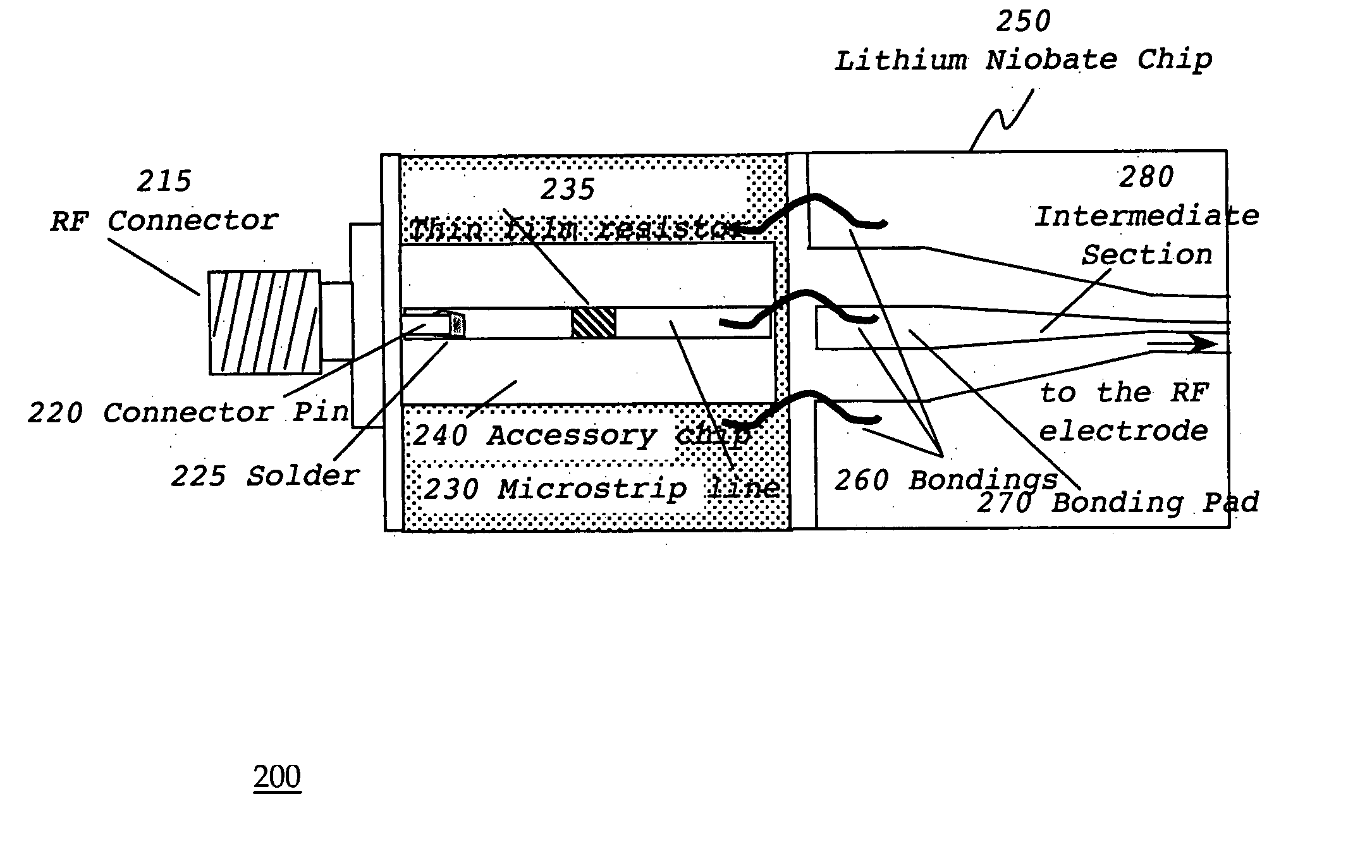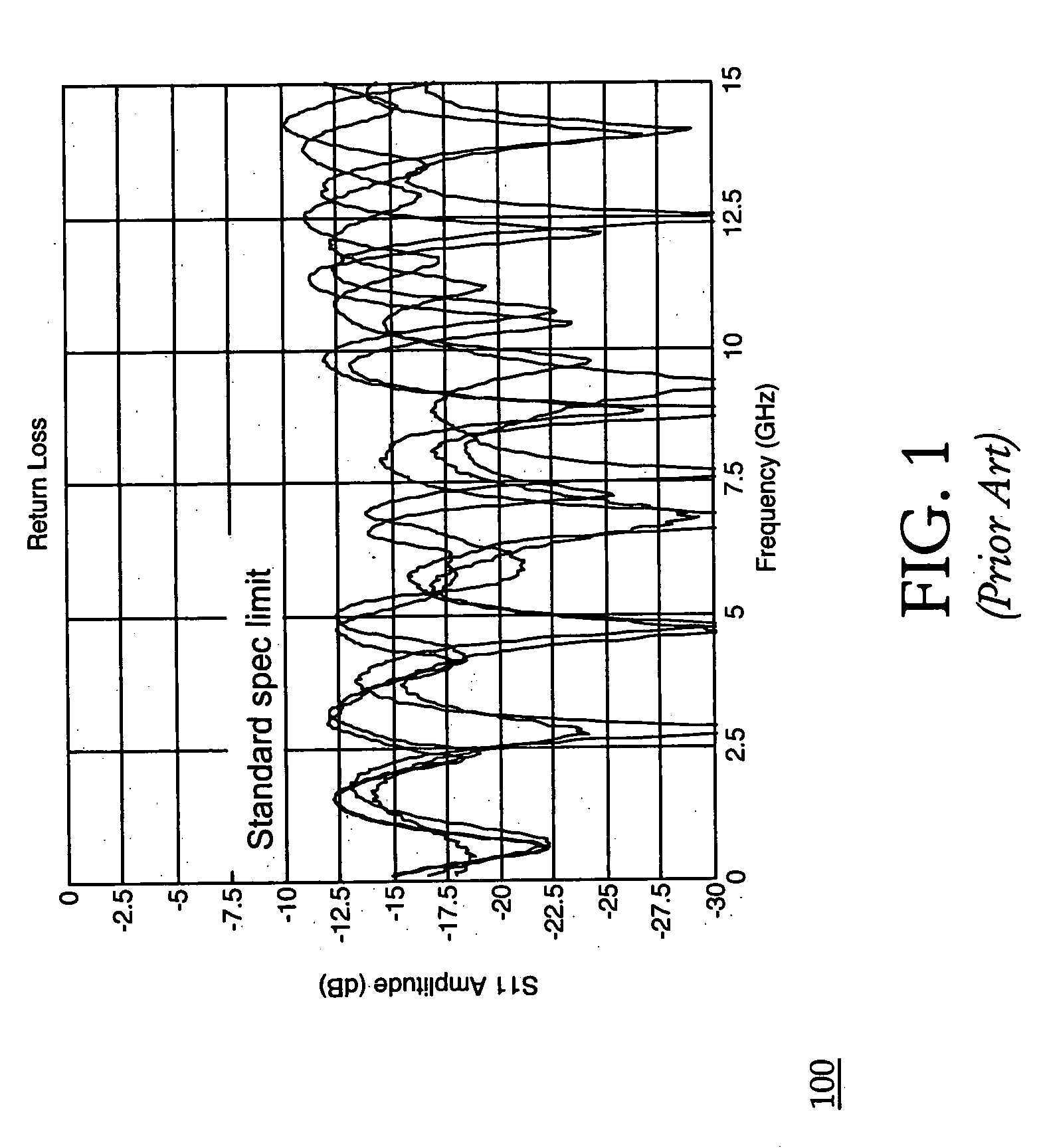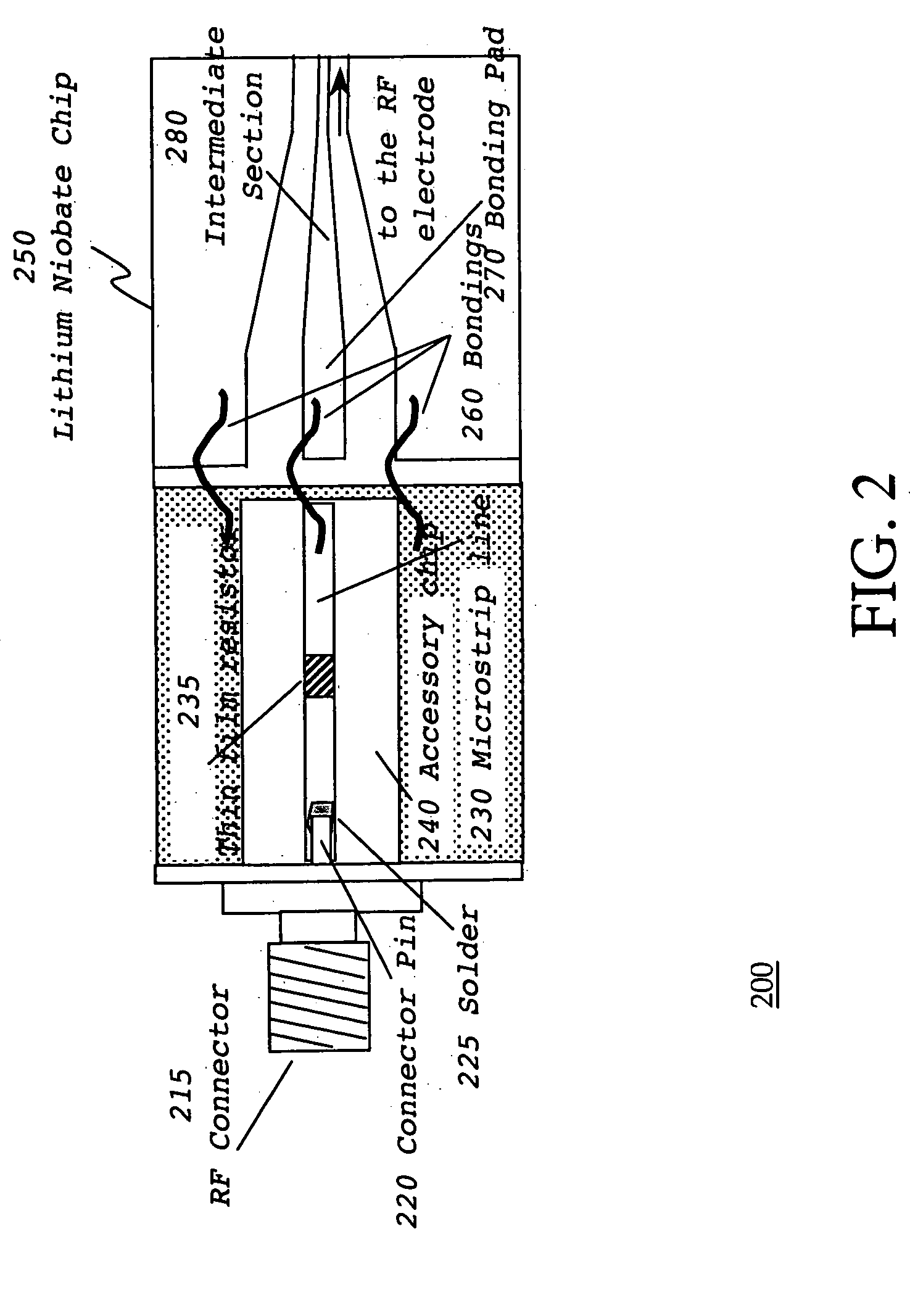System for reducing the electrical return loss of a lithium niobate traveling wave optical modulator with low characteristic impedance
a traveling wave optical modulator and characteristic impedance technology, applied in the field of fiber optics, can solve the problems of overall worsening performance, reducing the gap width between hot and ground electrodes of coplanar transmission lines, and overall worsening performance, so as to reduce driving voltage design, reduce chip length, and reduce the effect of electrical return loss
- Summary
- Abstract
- Description
- Claims
- Application Information
AI Technical Summary
Benefits of technology
Problems solved by technology
Method used
Image
Examples
Embodiment Construction
)
[0016] Referring now to FIG. 2, there is shown a structural diagram illustrating an electro-optical modulator 200 with a RF electrical circuit employing a thin resistive film in accordance with the present invention. The electro-optical modulator 200 comprises a microwave input chip or an accessory chip 240, which is coupled to the Lithium Niobate chip 250 through one or more wire bondings 260, ribbons, soldering, or dots of resin. In order to ease bonding adhesion, one or more of bonding pads 270 are placed on the Lithium Niobate chip 250, with a tapered impedance-controlled structure connecting the one or more bonding pads 270 to the modulating RF line positioned near the optical waveguides.
[0017] The accessory chip 240 has a broadband attenuator, such as a thin film resistor 235, for connecting a RF connector 215 to a RF line or an intermediate section to the RF electrode 280 of the Lithium Niobate chip 250. A microwave path in the microstrip line 230 could be interrupted in a ...
PUM
| Property | Measurement | Unit |
|---|---|---|
| impedance | aaaaa | aaaaa |
| impedance | aaaaa | aaaaa |
| impedance | aaaaa | aaaaa |
Abstract
Description
Claims
Application Information
 Login to View More
Login to View More - R&D
- Intellectual Property
- Life Sciences
- Materials
- Tech Scout
- Unparalleled Data Quality
- Higher Quality Content
- 60% Fewer Hallucinations
Browse by: Latest US Patents, China's latest patents, Technical Efficacy Thesaurus, Application Domain, Technology Topic, Popular Technical Reports.
© 2025 PatSnap. All rights reserved.Legal|Privacy policy|Modern Slavery Act Transparency Statement|Sitemap|About US| Contact US: help@patsnap.com



